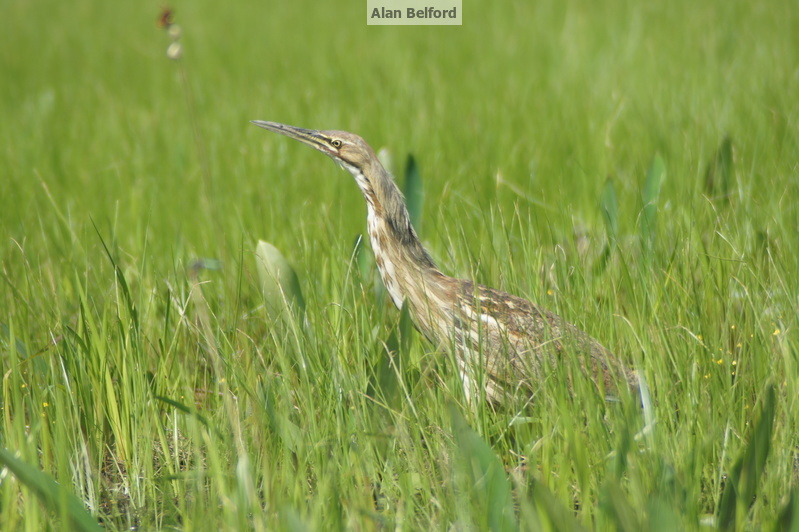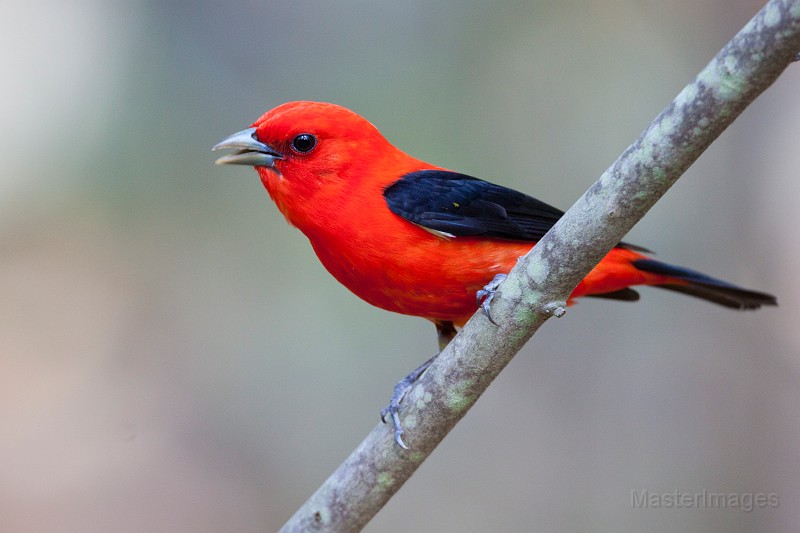Great Birding in the Adirondacks during Spring Migration
Spring is a constantly changing time of year in the Adirondacks. Migrating birds have been arriving in our area for weeks with each day adding new species to a growing list. During April the songs of Dark-eyed Juncos were joined by that of Winter Wrens and White-throated Sparrows, as other species of sparrow such as Vesper and Savannah Sparrows began to move into and through the area. Red-winged Blackbirds, Common Grackles, and even Rusty Blackbirds were found in increasing numbers. Broad-winged Hawks arrived from the south, and Northern Saw-whet Owls were heard tooting on cool nights along Sabbatis Circle Road south of Tupper Lake. The entirety of spring is an exciting time of year, but we birders have all been holding our breath for May.
After all, as the calendar turns to May and the bright green of buds and leaves shows on the bare twigs, the main influx of songbirds is still just arriving. So far we have been witnessing the trickle of migration. It is now time to brace for the excitement of the flood. I was just in coastal Mississippi and Alabama watching wing-weary trans-Gulf migrants arriving from Mexico. Scarlet Tanagers, Indigo Buntings, Tennessee, Yellow, and Bay-breasted Warblers dripped from the trees and covered lawns. It was a veritable flood of feathered color, and that wave will soon be lapping on our shores!

Hear them sing through out the Adirondacks
In this avian inundation, the warblers are often among our favorites. Just in the past few days I have heard Black-throated Blue and Black-throated Green Warblers singing, seen Common Yellowthroat and Northern Parula, and heard my first Ovenbird of the season. Reports are starting to come in from across the Adirondacks as more and more warblers arrive. Palm Warbler, Black-and-White Warbler, Yellow-rumped Warbler, and Common Yellowthroat are all being seen across the region. And Northern Waterthrush, Palm Warbler, and Yellow-rumped Warblers have been sining along Sabbatis Circle Road and at Sabbatis Bog. And warblers don't have an exclusive hold on arriving birds, either.
Blue-headed Vireos and Ruby-crowned Kinglets are increasing daily across the Adirondacks and Sabbatis Bog attracted a singing Lincoln's Sparrow two days ago, adding to the year-round resident boreal species like Gray Jay. Local wetlands and marshes are also accented by the pumping calls of American Bittern as well as the winnowing of Wilson's Snipe.

Find all different species of bird in the Adirondacks
And spring migration can bring with it unusual species as well. Just this week an Orchard Oriole was found in the Champlain Valley near Plattsburgh. It was an early record for Orchard Oriole for the region and this more southerly species is not commonly found ever in the North Country. It is a reminder to be on the lookout for rare species right now as well as the species we know to be arriving soon.
And so we prepare ourselves for the flood of both expected and unexpected arriving species. This next week and a half will find Nashville, Magnolia, Canada, Mourning, Chestnut-sided, Yellow, Blackpoll, and Blackburnian Warblers showing up to lay claim to their territories and breed. With them will be a cacophony of song as Scarlet Tanagers, Indigo Buntings, Red-eyed, Blue-headed, and Philadelphia Vireos add their voices to the forest. They will soon be joined by thrushes like Veery and Bicknell's Thrush and flycatchers such as Yellow-bellied and Alder. The floodgates are open. It's time to enjoy the wild ride on which it leads us.
Discover birding in the Adirondacks and more, browse our website to find great places to stay, eat and enjoy the great outdoors!






